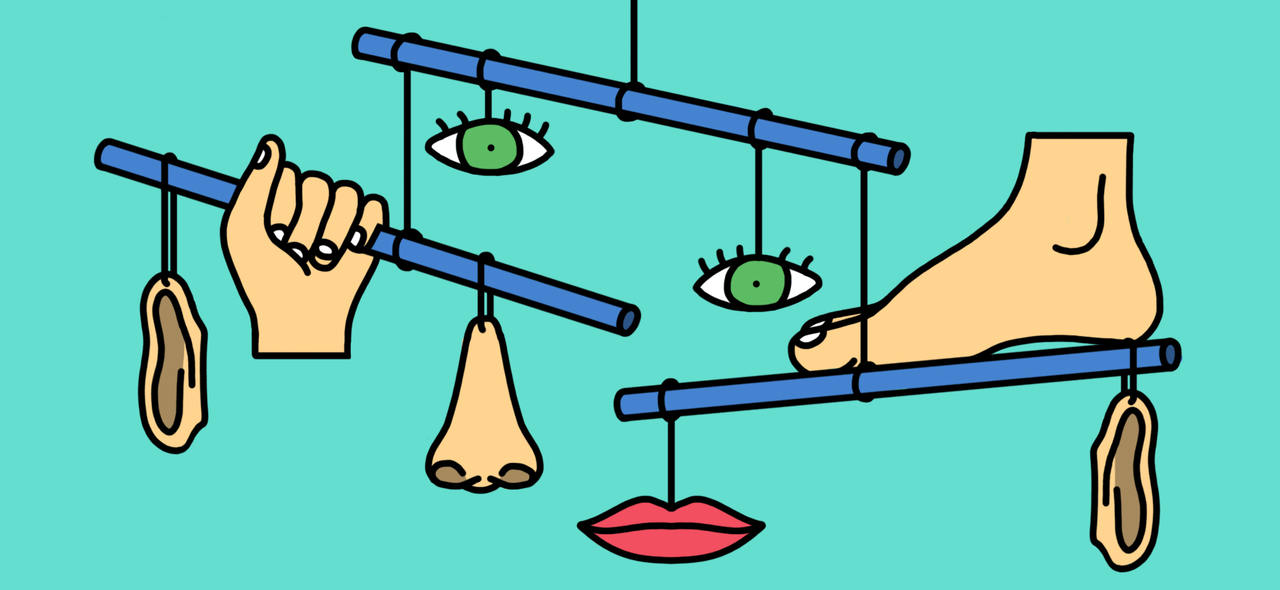How close does personalized online advertising get to us as our real persons? Technology critic Sara M. Watson describes a disconcerting encounter with her other ME.
She is between the ages of 25–34. Or she’s under 32. She is a millennial. She’s inferred married. But she uses her phone like a single lady. She completed high school. She votes, but she’s not registered in a party.
She lives in the home she has owned for fourteen years. Or she lives away from her hometown. She’s an Expat (US). She returned from a trip two weeks ago.
She drives a Honda ACCORD, has owned a truck, and intends to purchase a vehicle soon. She might like RVs.
She spends her free time on gourmet cooking, needlework, and auto work. She’s interested in search engine optimization, cloud computing, and shooter games. She watches PBS, thriller movies, and China Central Television. She listens to rock music, rap & hip-hop, and reads children’s literature. She’s into robots and renminbi. She likes water, ice, oranges, day spas, Chinese New Year, cervical vertebrae, and human skin color. She’s got retro style.
When she scans her passport and thumbprint at Changi airport, she’s recognized as a dependant. Her bank registers her as a housewife. She qualifies for Global Entry and TSA PreCheck.
She has eight lines of credit and is an upscale card holder. She’s into coupons. She has recently purchased party goods, personal care products for men, and women’s plus-sized apparel. She only walked 40,094 steps last week. She might qualify for a medical study on anorexia.
She has skills in social media, research, and blogging. She is an expert in Bitcoin, Python, and the Internet. She is very relationship-focused, builds trust quickly, and appreciates open, casual conversations. It comes naturally to her to be interested in psychology and to prioritize innovation and excitement above stability and security. 5.2% of her tweets contain emoji.
She practices gratitude and is working on her self-esteem.
She is my data doppelgänger.[1]
***
I catch glimpses of her in sidebars and banners, in the branded ads creeping into my infinite scrolls. She surfaces in recommendations and personalized results—fleeting encounters unless captured by screenshot.
She is a pixelated, automated portrait of myself. She is fragments, an amalgamation I see in the digital mirror. She’s me, now through a glass darkly.
She is a pastiche of my patched-together digital detritus. She is my browsing history, my status updates, my GPS locations, my responses to marketing mail, my credit card transactions, and my public records.
She is also made up of the inferences and assumptions that others have imposed on that data. I wonder where she gets these crazy ideas about me. I concoct untestable folk theories to explain her erratic behavior.
Her strangely familiar features make me second guess myself. I face the uncanny. Does she not know me at all, or does she know me better than I know myself?
She is an artificially intelligent agent.
It’s hard to judge how much of her I should read into an interface. Is she presenting her entire history, or is this just a silhouette of a few vague demographic features? Female. 24–35. In this postal code.
Sometimes I go digging for her, grasping for more details.
She traverses contexts. I can’t keep track of her. She multiplies. And yet she is fractured across silos. She has a perfect memory, though to me, her traces are ephemeral. The output of machine learning, her logic can no longer be explained.
She is banality, the seemingly innocuous clicks and queries of everyday digital life. But she’s very importantly, consequentially me.
Everything that makes her up suddenly becomes sensitive. She is more than just identifiable information. She’s abstractions of me upon which judgements are made. Her habits stand as proxy signals for otherwise protected classes. She is discriminating and discriminated against.
As more systems seamlessly anticipate my needs, she stands in for me, whether I’ve granted her that authority or not. She caters to me and coerces me.
She will start to more closely resemble me as she becomes more sophisticated, more advanced, with higher fidelity features, facially-recognized and photorealistic.
Does she mischievously misrepresent me to the world?
***
Today, I have few means of confronting her and even fewer means of setting her straight. Her management requires patience and persistence. Sometimes, I can examine her collected memory and interpretations. I check up on where she’s been, who she’s grants access to.
When I get sick of her shenanigans, I just throw more data at her, tossing red herrings into the mix. Obscurity by obfuscation. But that renders her useless to me.
I now demand she show herself to me. I shouldn’t have to pay to see her.
I want her to stop assuming what I want and start asking me about my intentions. I need to be able to trust her enough to act as my proxy, with assurance that she’ll keep my interests in mind. I could send her out, empowered to act on my behalf, instead of scrambling around to keep tabs on her.
[1] Details compiled from my actual profiles in Facebook Ad Preferences, Google Ad Preferences, LinkedIn, Klout, Acxiom’s aboutthedata.com, Crystal’s proprietary personality detection technology, and others.

The controlled Self
Where does the human sense of self actually come from? An essay by philosopher Thomas Metzinger.

When Selfies Become Surveillance Beacons
A person can be identified just as much by their face as by their fingerprints. This is immensely important for the nascent surveillance society.

Boundaries of the ego
The boundless self: Dr. Thomas Binder investigates for SCHIRN MAGAZIN the question of how limited managers’ egos actually are.

The self-fulfilling prophesy
Algorithms have so far analyzed human identity merely for economic reasons. The result is dangerously far removed from our reality.

Losing Face
The human face performs many important functions. A loss of control over it has massive consequences.